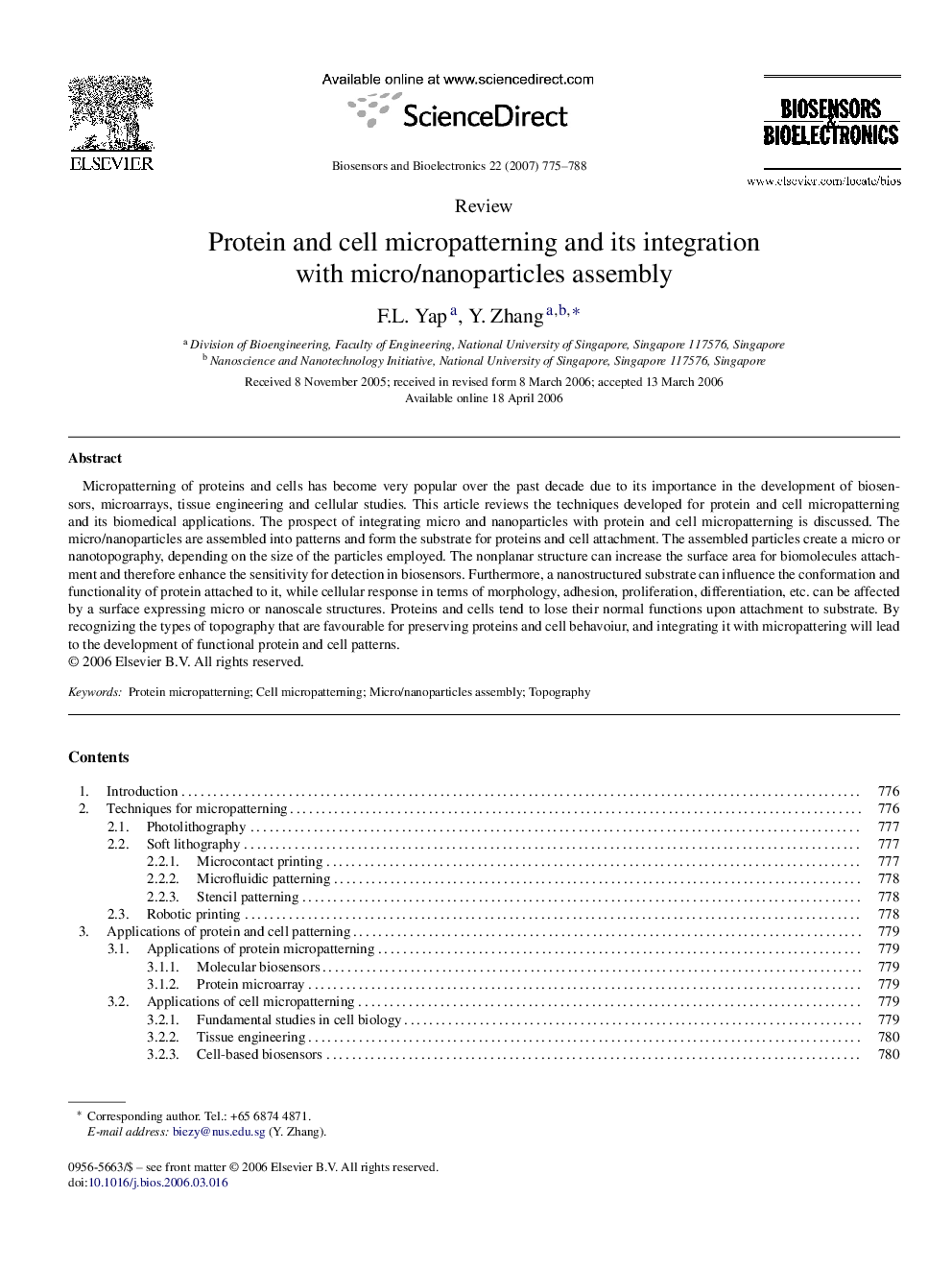| Article ID | Journal | Published Year | Pages | File Type |
|---|---|---|---|---|
| 869228 | Biosensors and Bioelectronics | 2007 | 14 Pages |
Micropatterning of proteins and cells has become very popular over the past decade due to its importance in the development of biosensors, microarrays, tissue engineering and cellular studies. This article reviews the techniques developed for protein and cell micropatterning and its biomedical applications. The prospect of integrating micro and nanoparticles with protein and cell micropatterning is discussed. The micro/nanoparticles are assembled into patterns and form the substrate for proteins and cell attachment. The assembled particles create a micro or nanotopography, depending on the size of the particles employed. The nonplanar structure can increase the surface area for biomolecules attachment and therefore enhance the sensitivity for detection in biosensors. Furthermore, a nanostructured substrate can influence the conformation and functionality of protein attached to it, while cellular response in terms of morphology, adhesion, proliferation, differentiation, etc. can be affected by a surface expressing micro or nanoscale structures. Proteins and cells tend to lose their normal functions upon attachment to substrate. By recognizing the types of topography that are favourable for preserving proteins and cell behavoiur, and integrating it with micropattering will lead to the development of functional protein and cell patterns.
